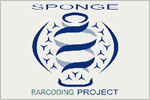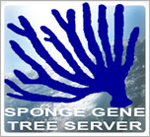Research » Genomics & Phylogenomics
The true relationships of higher animal taxa ("Phyla") are still under hot debate. Although molecular approaches, primarily large-scale phylogenomics amino acid sequence analyses, have contributed much to increase our understanding, they also have often contradicted and conflicted "classical" phylogenies based on morphological characters or single/few genes.
Especially the phylogenetic relationships of non-bilaterian animals (sponges, placozoans, cnidarians, Ctenophores) and their relationships to the Bilateria are far from being resolved: what is the position of Porifera (sponges)? What is the position of Placozoa and/or the Ctenophores? Are they more ancestral or derived compared to Porifera? What are the implications?
We are currently applying phylogenomic approaches (transcriptome and genome sequence analysis, as well as genome gene content) to contribute to solving these important questions.
Full genome sequences of non-bilaterian animals not only provide essential information to reconstruct phylogenies but also on the early-metazoan genomic toolkit that facilitated their remarkable evolutionary success since the Precambrian.
The true relationships of higher animal taxa ("Phyla") are still under hot debate. Although molecular approaches, primarily large-scale phylogenomics amino acid sequence analyses, have contributed much to increase our understanding, they also have often contradicted and conflicted "classical" phylogenies based on morphological characters or single/few genes.
Especially the phylogenetic relationships of non-bilaterian animals (sponges, placozoans, cnidarians, Ctenophores) and their relationships to the Bilateria are far from being resolved: what is the position of Porifera (sponges)? What is the position of Placozoa and/or the Ctenophores? Are they more ancestral or derived compared to Porifera? What are the implications?
We are currently applying phylogenomic approaches (transcriptome and genome sequence analysis, as well as genome gene content) to contribute to solving these important questions.
Full genome sequences of non-bilaterian animals not only provide essential information to reconstruct phylogenies but also on the early-metazoan genomic toolkit that facilitated their remarkable evolutionary success since the Precambrian.
Key publications:
Juravel, K., Porras, L., Höhna, S., Pisani, D., Wörheide, G., 2023. Exploring genome gene content and morphological analysis to test recalcitrant nodes in the animal phylogeny. PloS One 18 (3), e0282444.
Pett, W., Adamski, M., Adamska, M., Francis, W.R., Eitel, M., Pisani, D., Wörheide, G., 2019. The role of homology and orthology in the phylogenomic analysis of metazoan gene content. Molecular Biology and Evolution 36, 643–649.
Mills, D.B., Francis, W.R., Vargas, S., Larsen, M., Elemans, C.P.H., Canfield, D.E., Wörheide, G., 2018. The last common ancestor of animals lacked the HIF pathway and respired in low-oxygen environments. eLife 7, e31176.
Feuda, R., Dohrmann, M., Pett, W., Philippe, H., Rota-Stabelli, O., Lartillot, N., Wörheide, G., Pisani, D., 2017. Improved modelling of compositional heterogeneity supports sponges as sister to all other animals. Current Biology 27, 3864–3870.
Dohrmann, M., Wörheide, G., 2017. Dating early animal evolution using phylogenomic data. Scientific Reports 7, 3599.
Pisani, D., Pett, W., Dohrmann, M., Feuda, R., Rota-Stabelli, O., Philippe, H., Lartillot, N. & Wörheide, G., 2015. Genomic data do not support comb jellies as the sister group to all other animals. Proceedings of the National Academy of Sciences 112(50): 15402-15407. Open Access.
Philippe, H., Brinkmann, H., Lavrov, D.V., Littlewood, D.T.J., Manuel, M., Wörheide, G., Baurain, D., 2011. Resolving difficult phylogenetic questions: why more sequences are not enough. PLoS Biology 9, e1000602. (open access)
Favourite Links
Projects





